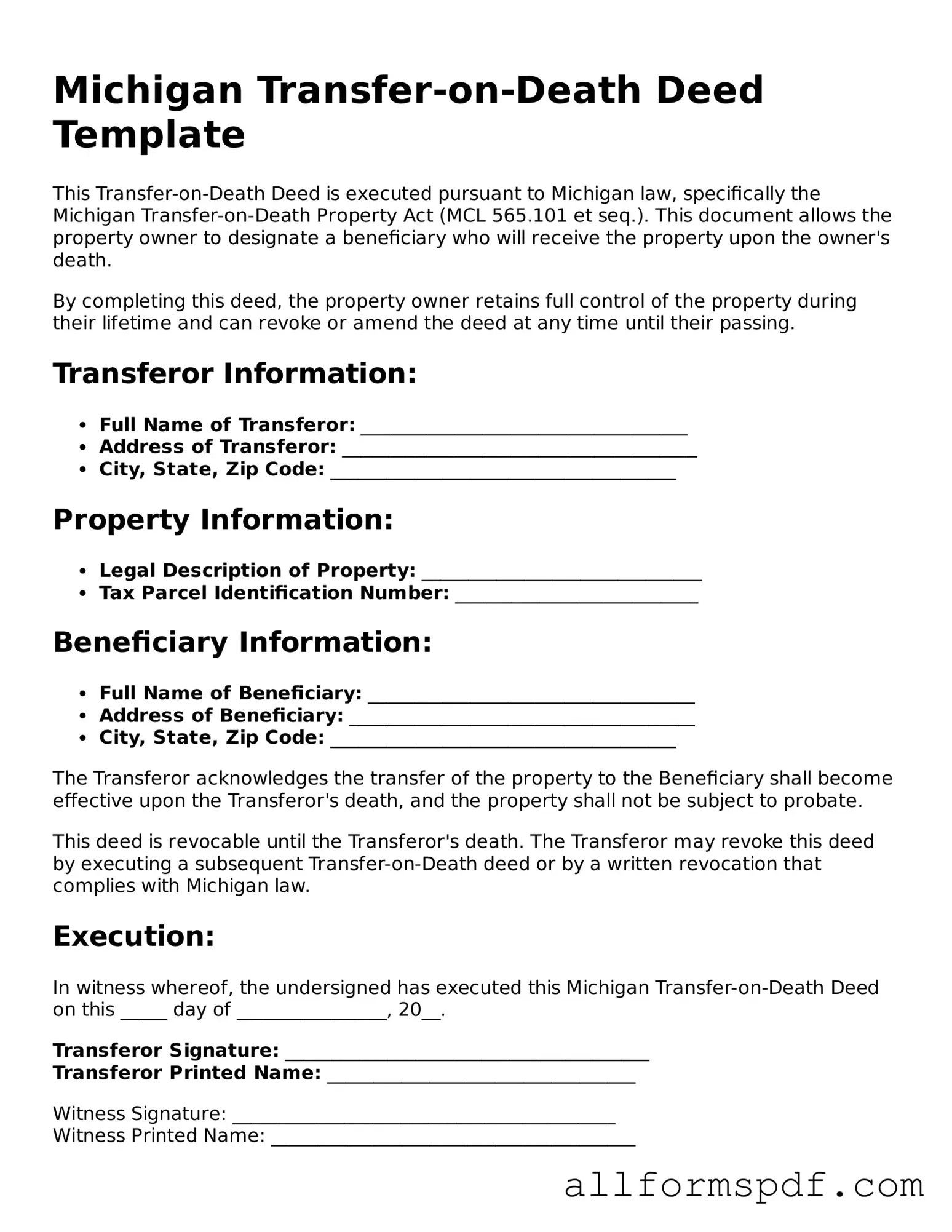Filling out a Transfer-on-Death (TOD) Deed form in Michigan can be a straightforward process, but many people make common mistakes that can lead to complications down the line. Understanding these pitfalls can help ensure that your intentions are honored and that your property is transferred smoothly to your beneficiaries.
One of the most frequent errors is failing to include all required information. The TOD Deed requires specific details, such as the legal description of the property and the names of the beneficiaries. Omitting any of this information can render the deed invalid. It’s crucial to double-check that all fields are filled out completely.
Another common mistake is not signing the deed in front of a notary. Michigan law requires that the TOD Deed be notarized to be valid. Without a proper signature and notarization, the deed may not be recognized, which could lead to unintended consequences for your heirs.
People often forget to update the deed when circumstances change. Life events such as marriage, divorce, or the death of a beneficiary can affect your intentions. If you don’t update the deed accordingly, the property may not go to the person you intended, leading to disputes and confusion.
Additionally, some individuals mistakenly believe that a TOD Deed supersedes other estate planning documents. This is not always the case. If there are conflicting documents, such as a will or a trust, it can create legal challenges. Always ensure that your estate planning documents are in harmony with one another.
Another misstep is not considering the tax implications. While a TOD Deed allows for the transfer of property outside of probate, it does not exempt the property from estate taxes. Understanding how this transfer affects your overall tax situation is vital for effective estate planning.
Some people also overlook the importance of communicating their intentions to beneficiaries. It’s wise to have an open discussion with those you are naming in the deed. This not only helps to avoid surprises but also allows your loved ones to understand their roles and responsibilities regarding the property.
Finally, a significant error is not consulting with a legal professional. While it may seem simple to fill out the form, the nuances of property law can be complex. Seeking advice from an attorney who specializes in estate planning can help you avoid mistakes and ensure that your wishes are carried out effectively.
By being aware of these common mistakes, you can take proactive steps to ensure that your Transfer-on-Death Deed is filled out correctly. This will help provide peace of mind for you and your loved ones, knowing that your property will be handled according to your wishes.
